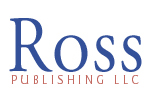
392 Central Park West, Suite 20C
New York, NY 10025-5878 USA
Tel: 212-765-8200
Fax: 866-755-2780
info@rosspub.com

Putevoditel' po nauchnym obshchestvam Rossii.
Irina I. Komarova, compiler
Introduction by Edward Kasinec and Robert H. Davis,
Jr. In Russian.
Beginning in the second half of the 18th century, Russian academics and intellectuals banded together to form "scientific" (or learned) societies around their fields of interest. Most of these were formed at Moscow University. At first these societies were informal in nature and were formed as like-minded people gathered to discuss topics of mutual interest. At that time, history and philology were the subjects that generated the most interest. After the French Revolution, these societies were banned by Catherine II, who considered them a potential nest of revolutionary thoughts and plots.
The period from 1801-1860 could be considered as a second phase in the development of Russian learned societies. This was the period in which new universities (including St. Petersburg University in 1819) and scientific centers were being opened. During that period, many new societies were being formed, especially those in the areas of philology, archaeography, archaeology and history. For the first time, the societies were more organized in terms of having rules and financial support. The societies also started their own publications.
The third phase is considered to be between 1860-1917. By this time, the societies had become even more organized and more specialized. The development of the fields of architecture and geography, for example, brought about many new societies. Altogether, at least 400 societies were active in the 19th century and up through the early years of the Revolution.
The publications of these societies are of great interest to anyone studying Russian history or culture. They touch upon an enormous range of subjects and contain vast quantities of first-hand information, as well as the ideas and opinions of a large proportion of the Russian intelligentsia. Most libraries collecting in Russian imperial studies hold some of the publications of these societies, but hardly a library in the world holds anything approaching a complete collection, including the imperial depository libraries such as St. Petersburg, Helsinki, Warsaw, etc. (Some of the publications have been microfiched by Western firms.)
The present work provides scholars throughout the world with a catalog of all of the publications of these societies. This guide organizes information about historic Russian learned societies in a systematic manner. It lists more than 400 societies in alphabetical order, including both well-known, large, national , as well as many smaller organizations with specialized interests. As an example, one of these societies was the "Jewish Historical Society," which had numerous very interesting publications.
Societies included in the Guide include those active in the following areas:
Readers will find the following information in each entry:
Each entry also provides a list of the society's publications, as well as a listing of publications about the society, the names of people who chaired the society and the years they were in office, and often listings of the society's members.
The volume contains the following indexes:
Putevoditel' po nauchnym
obshchestvam Rossii 8½x11", xviii + 883 pp., ISBN: 0-88354-380-X................................................................................................................$100